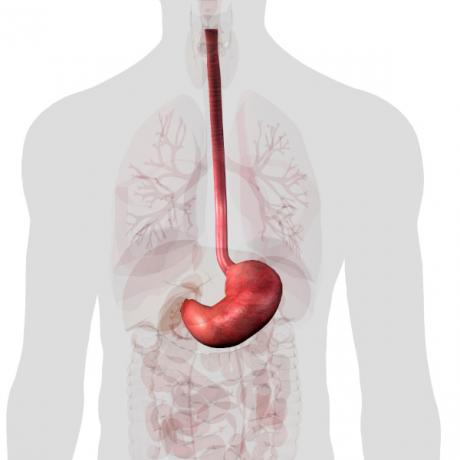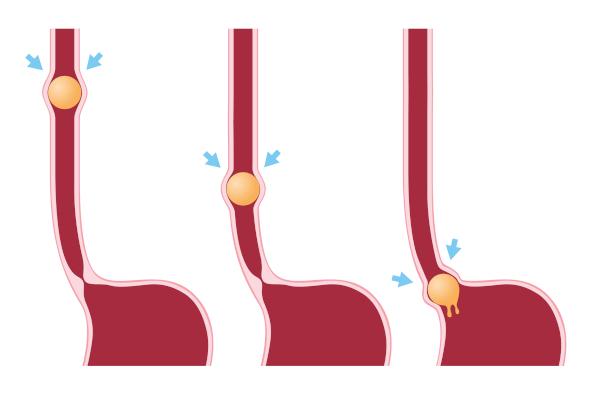O esophagus is an organ that is part of the digestive system, maintaining the communication between the pharynx and the stomach. This muscular organ performs movements that ensure that food reaches the stomach to continue the digestion process. Inflammations in this organ are called esophagitis and can cause pain and difficulty in swallowing.
Know more: Organs of the human body - what they are and their functions
Characteristics of the esophagus
The esophagus is a muscular tube that extends from the pharynx to the stomach, presenting an approximate size of 25 centimeters. This organ is located posteriorly to the trachea and anteriorly to the spine; passes through the diaphragm, in front of artery aorta, and flows into the stomach.
It is customary to distinguish three portions in the esophagus: cervical, thoracic (largest) and abdominal. Some authors also recognize a portion called diaphragmatic, which crosses the diaphragm to reach the abdomen.
The organ has a mucosa covered by a epithelium non-keratinized laminate flooring. It is also possible to observe the presence of
glands secreting mucus. In the lamina propria of the region close to the stomach, there are the esophageal cardia glands. Already in the submucosa, are the esophageal glands, which release a mucus that has the important function of protecting the mucosa and facilitating the transport of food towards the stomach.
As mentioned, the esophagus is a muscular organ, being consisting of smooth and skeletal striated musculature. The muscular layer of the upper third of the esophagus is exclusively striated musculature, while that of the lower third is smooth. The median region presents striated and smooth musculature.
In the final portion of the esophagus, near the stomach, the circular esophageal muscle acts as a broad lower esophageal sphincter (gastroesophageal sphincter). Under normal conditions, this sphincter remains contracted, which prevents the reflux of gastric contents.
In the esophagus the presence of the upper esophageal sphincter (pharyngoesophageal sphincter), which relaxes so that food moves from the pharynx into the esophagus. When there is no passage of food, the sphincter remains contracted, which prevents air from entering the organ.
THE contraction and relaxation of the sphincters they are essential for the maintenance of the digestive process properly. A pathology related to the inadequate functioning of the sphincters is the achalasia, which occurs when the lower esophageal sphincter does not relax during swallowing, preventing food from reaching the stomach.
The problem causes food to accumulate for a long period in the esophagus, causing it to dilate over time. The patient with achalasia may have symptoms such as difficulty in swallowing food, chest pain, and regurgitation.
Read too: Muscle tissue - its most striking feature is its ability to contract
How the esophagus works

The esophagus promotes the connection between the pharynx and the stomach, ensuring that food continues its way through the digestive tract and is digested. The movement of the bolus towards the stomach is achieved due to the contraction of the organ's musculature. At muscle contractions are termed peristaltic.
Read more: Peristaltic movements - controlled by the autonomic nervous system
Inflammation of the esophagus
Esophagitis is an inflammation that affects the esophagus region and has different causes. It can be classified into four main types: reflux, eosinophils, drug, and infectious.
Reflux esophagitis occurs when gastric contents do not remain exclusively inside the stomach, returning to the esophagus due to problems in the lower esophageal sphincter.
the esophagitis of eosinophils occurs when these defense cells infiltrate the muscosa of the esophagus. Drug-induced esophagitis occurs as a result of the use of some medications. Infectious esophagitis, on the other hand, can be caused by different agents, such as fungi, bacteria and virus.
Regardless of the cause, esophagitis can cause symptoms such as difficulty swallowing, feeling of stuck food, and chest pain.
By Vanessa Sardinha dos Santos
Biology teacher
